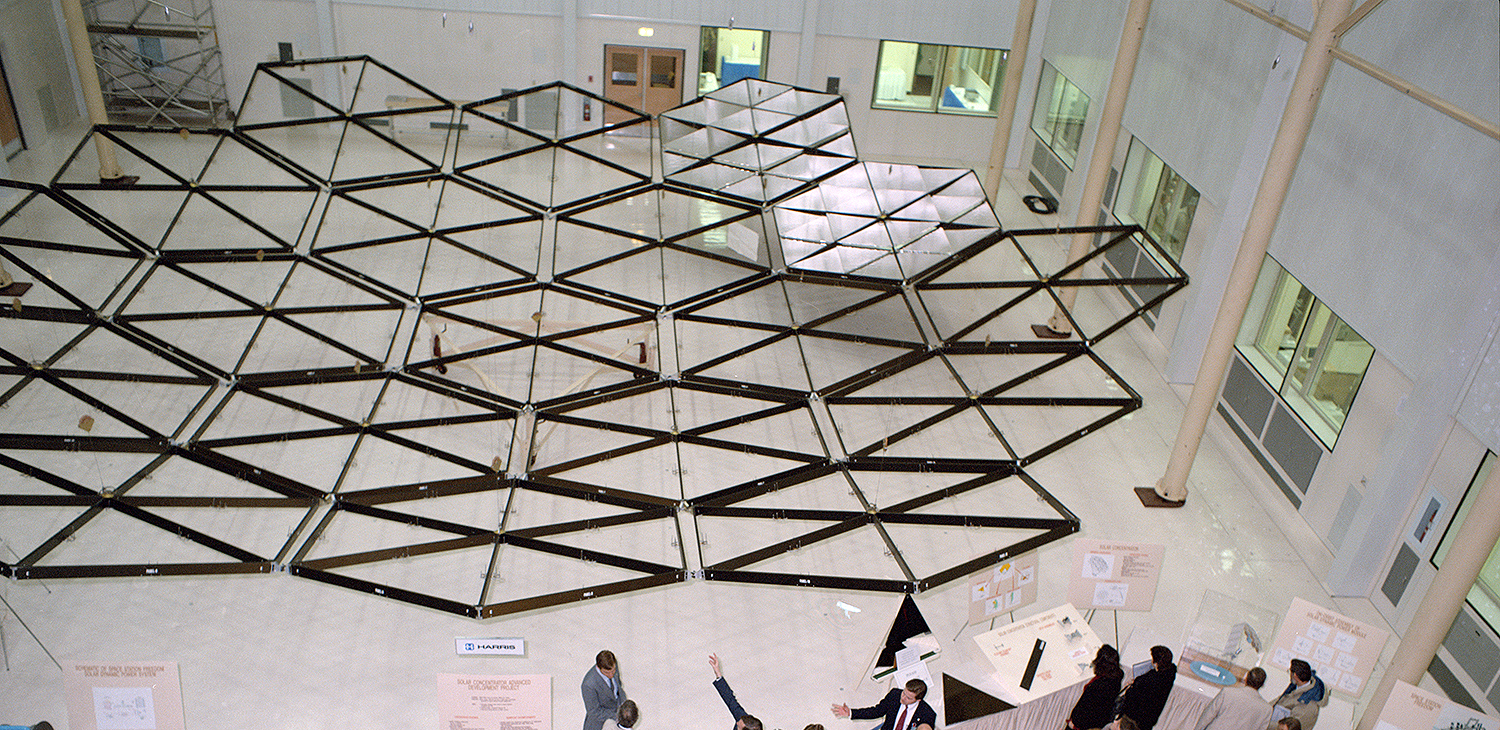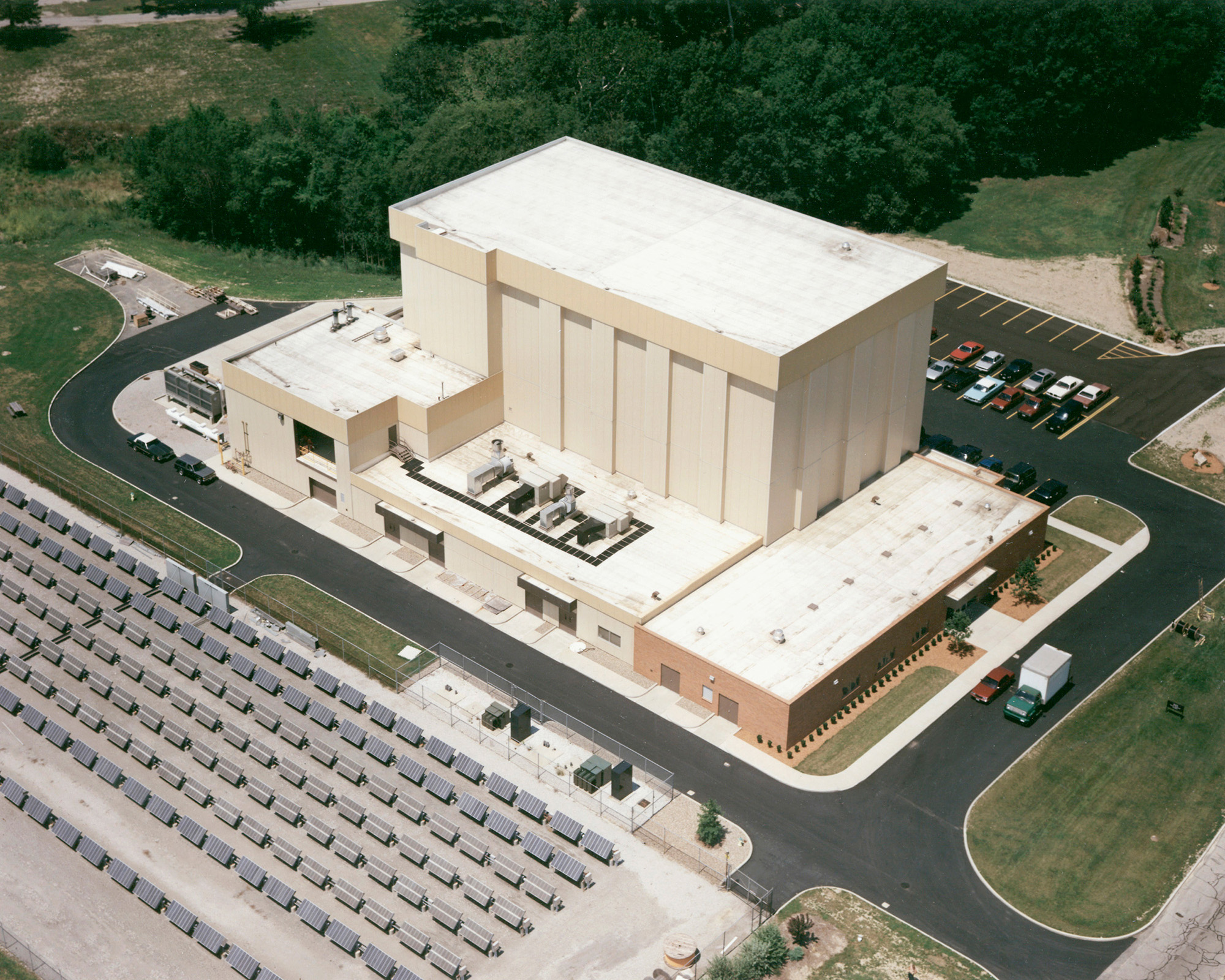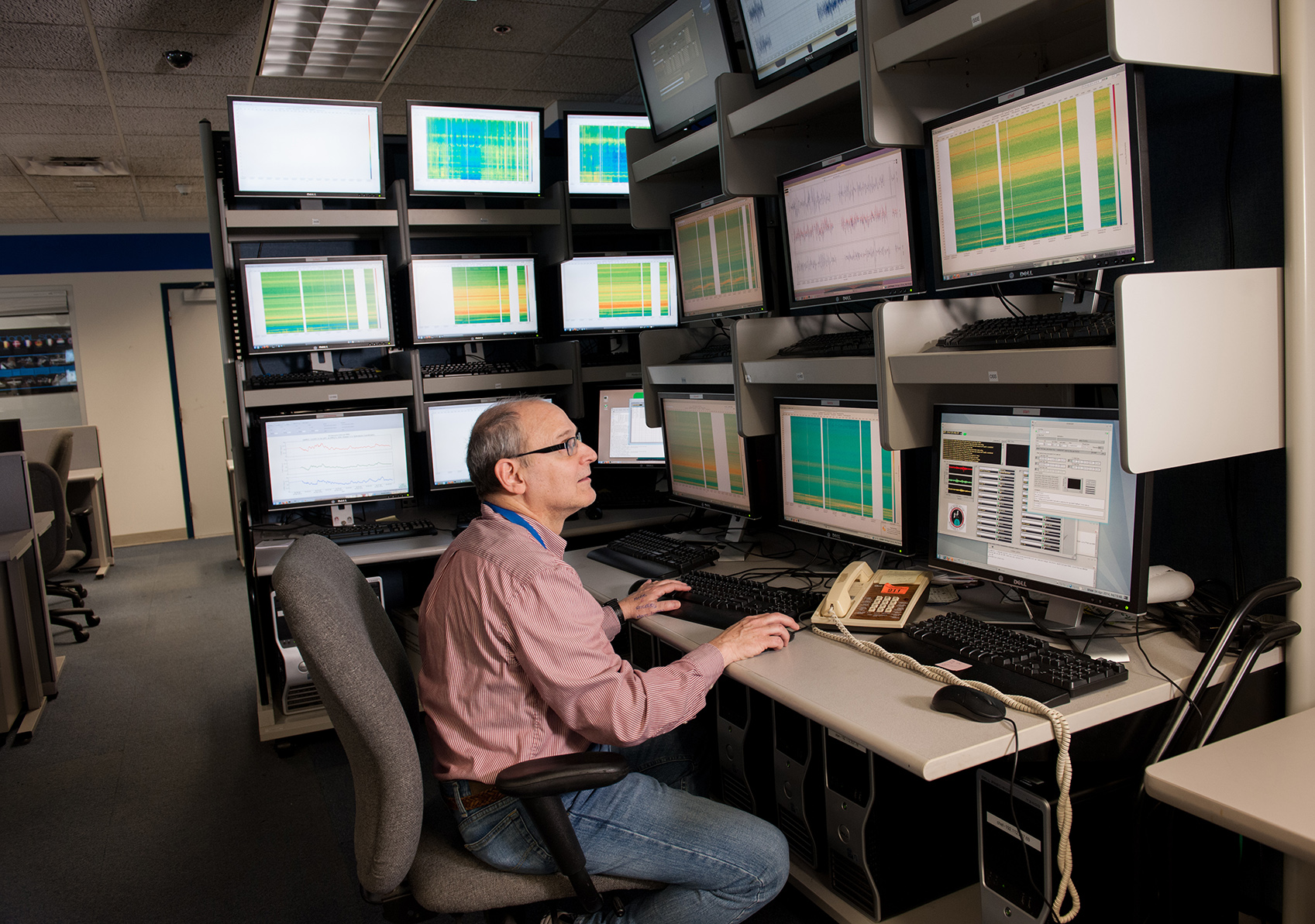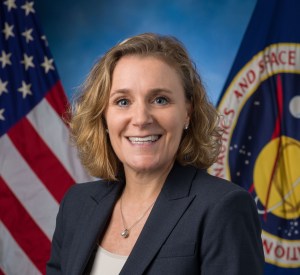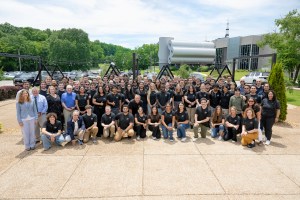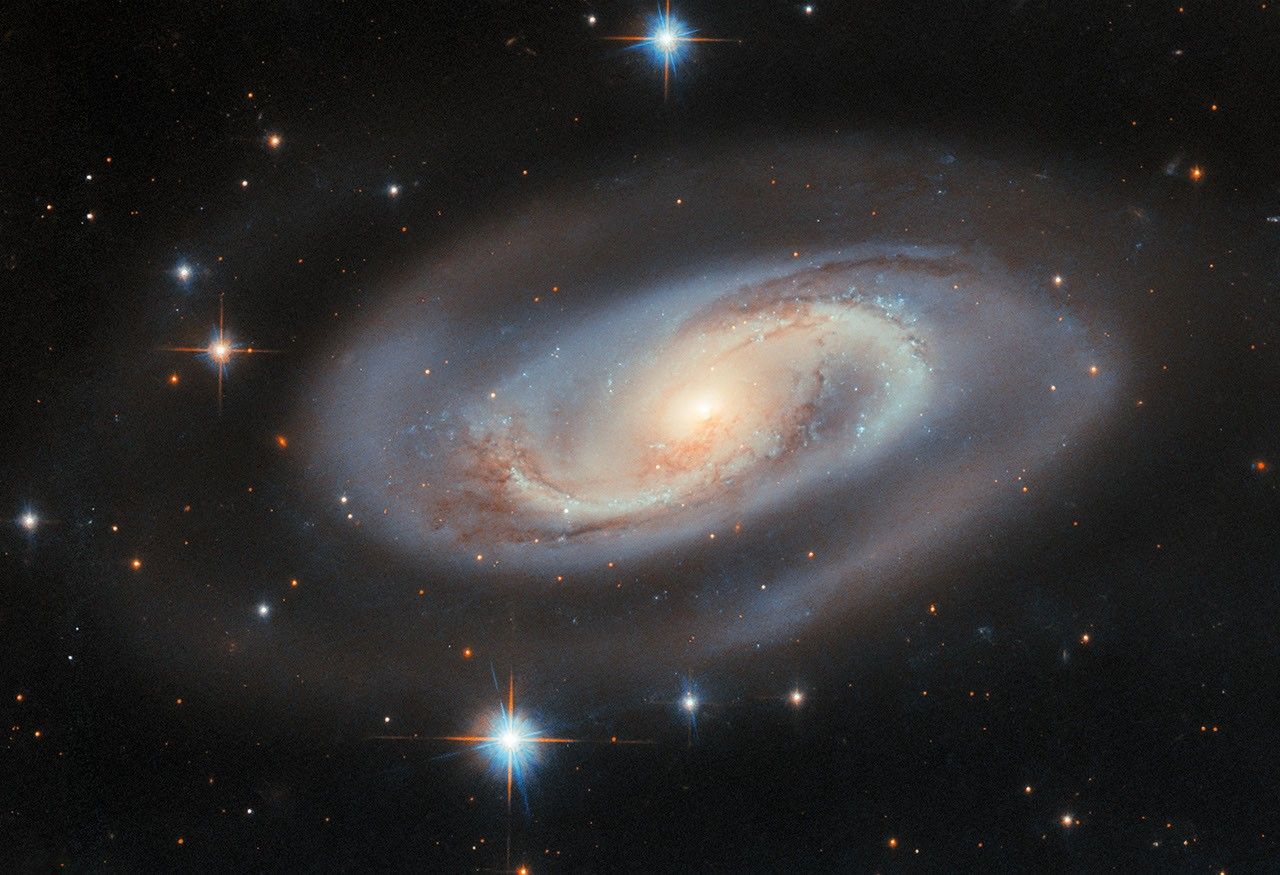On January 9, 1989 Space Station Freedom officials gathered at the Lewis Research Center to dedicate the Power Systems Facility (PSF), NASA’s first facility constructed specifically to test station hardware. Over thirty years later, the facility remains the nucleus of our power system research and remote operation of space station experiments.
Lewis engineers began planning the $6.2 million facility in 1984, shortly after being assigned responsibility for the station’s massive electrical power system.
The new facility possessed an array of tools to test power technologies and flight hardware for the space station’s electric power system. These included reinforced concrete cells to test hydrogen batteries, special laboratories, control rooms, and computer stations. The heart of the facility was a 65-foot-high clean room that filtered 90% of airborne particles out.
PSF supported the program with testing of the solar dynamic collector and a mock-up array section in the clean room, conducting qualification and life-cycle battery testing, and developing power management, distribution, and control software.
In 1992 the high bay was divided into two separate temperature and humidity-controlled test chambers. Many of the labs and offices were modified over time. Following completion of the International Space Station in 2001, testbed hardware was re-purposed to support the development of the Orion capsule and service module.
The PSF included an Engineering Support Room intended to monitor the on-orbit performance of the space station power system in real-time. This was superseded in 1996 by the Telescience Support Center, from which center personnel could remotely conduct experiments during shuttle missions. The support center was expanded in 2001 to accommodate experiments on the station.
For over 30 years, the PSF has supported not only the space station power system, but also on-orbit experimental equipment such as the Combustion Module-2, the Fluids Combustion Facility, and SCaN. Its testbeds and laboratories continue to aid the development of advanced battery, flywheel, and Stirling power systems.
Robert S. Arrighi
NASA Glenn Research Center
























